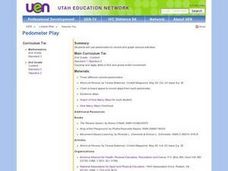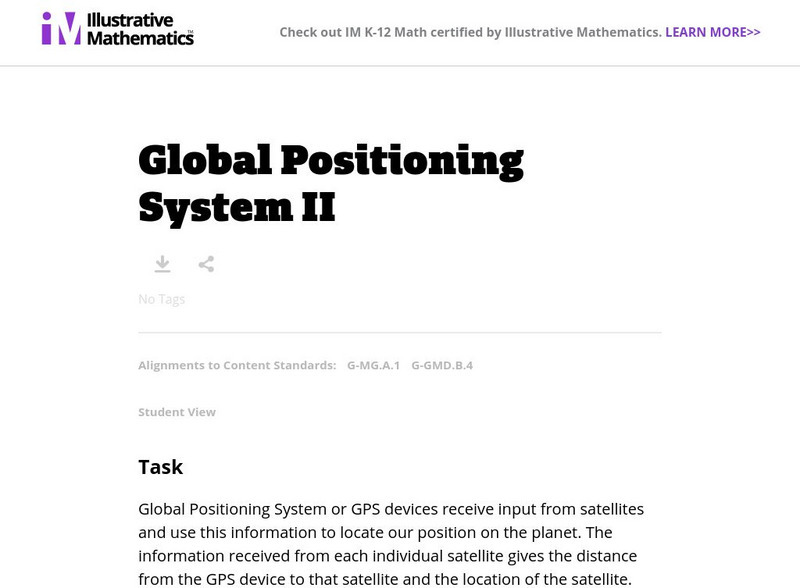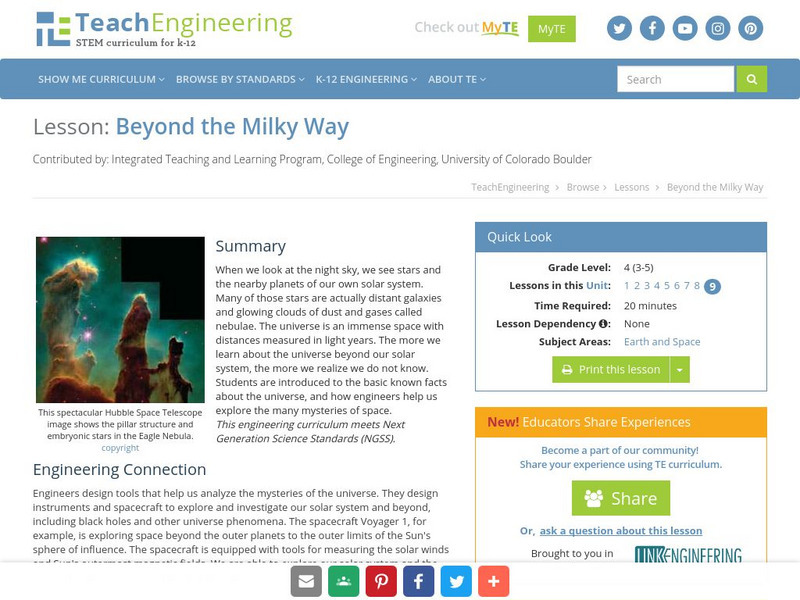Curated OER
Catapults!
Students work together to discover the relationship between the angle of catapults and the flight of different objects. They discover the heavier the object the more force is needed. They examine how engineers use this information to...
Curated OER
Pedometer Play
Second graders use pedometers to record and graph various activities. Students discuss various activities that can be done during recess and the types of movements that are associated with each activity. They predict which activities...
Curated OER
Moon Observations
Third graders create a model of the moon and use a flashlight to illustrate the various stages of the moon.
Curated OER
How High Does the Atmosphere Go?
Students explain how relatively thin the atmosphere is, compared to the size of the planet, and determine the relative extent of the four major atmospheric layers.
Curated OER
Mammoth Sunflower Problem
Students discuss the directions on a package of seeds. They open the package, count the seeds, and determine the planting requirements for the seeds.
Illustrative Mathematics
Illustrative Mathematics: G Mg, G Gmd Global Positioning System Ii
Satellites communicate with a GPS device and establish the distance between them and their locations. The set of points at a fixed distance from a satellite form a sphere so when the GPS receives its distance from a given satellite, this...
TeachEngineering
Teach Engineering: Beyond the Milky Way
When we look at the night sky, we see stars and the nearby planets of our own solar system. Many of those stars are actually distant galaxies and glowing clouds of dust and gases called nebulae. The universe is an immense space with...
Other
Usra: Lunar and Planetary Institute: Hot Spot Activity [Pdf]
For this lesson, students will measure the distances between Hawaiian islands, and convert and graph their data to determine the speed of the Pacific Plate.







![Usra: Lunar and Planetary Institute: Hot Spot Activity [Pdf] Lesson Plan Usra: Lunar and Planetary Institute: Hot Spot Activity [Pdf] Lesson Plan](https://d15y2dacu3jp90.cloudfront.net/images/attachment_defaults/resource/large/FPO-knovation.png)